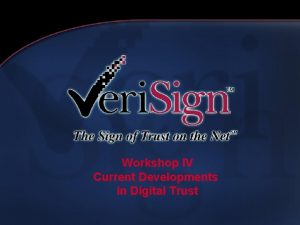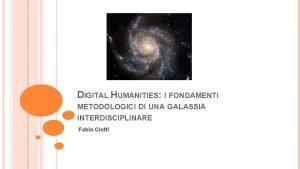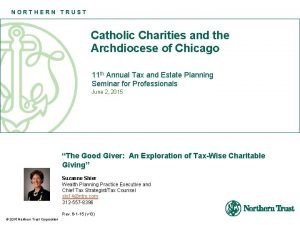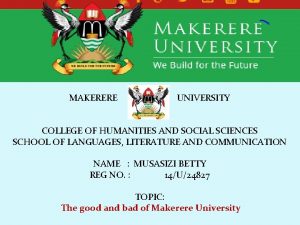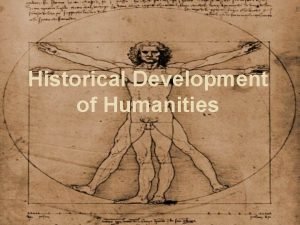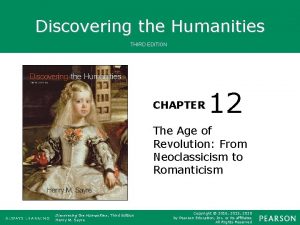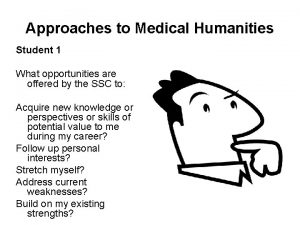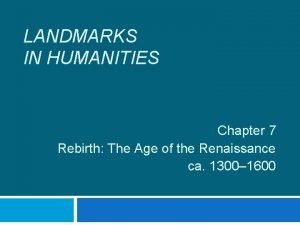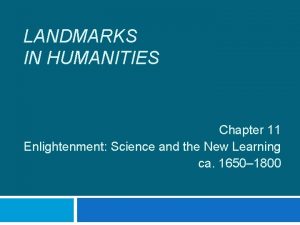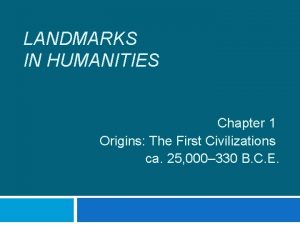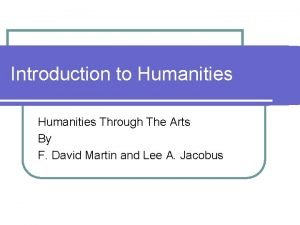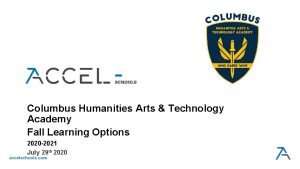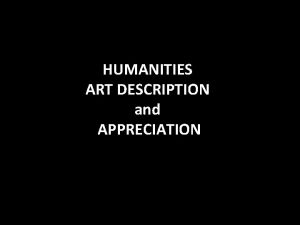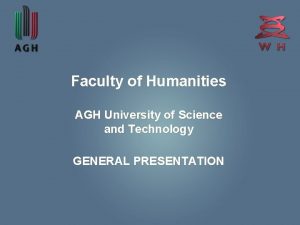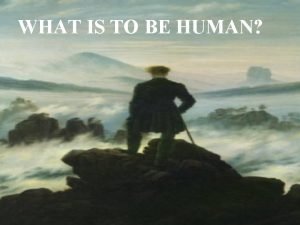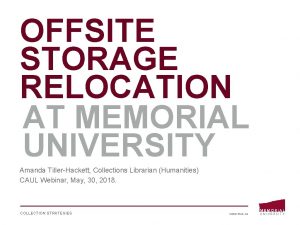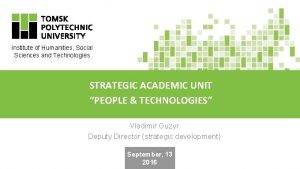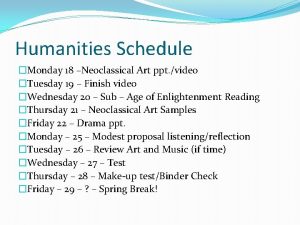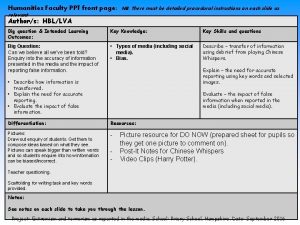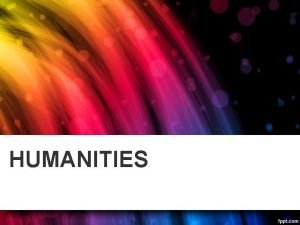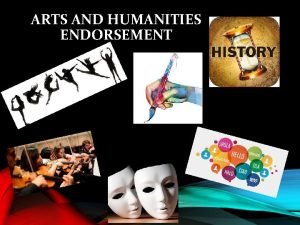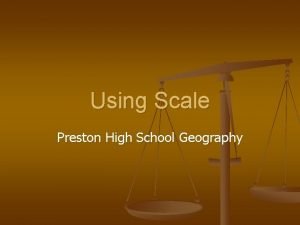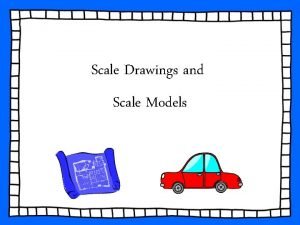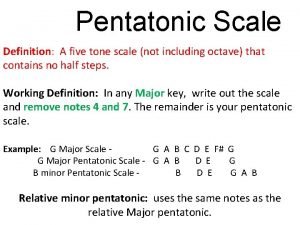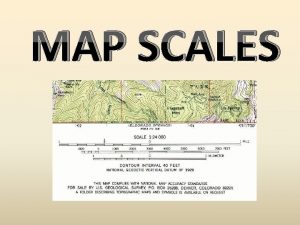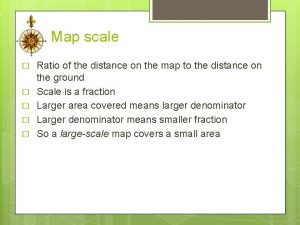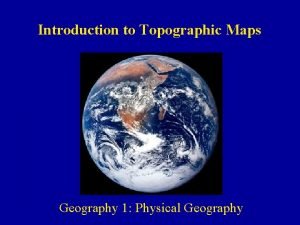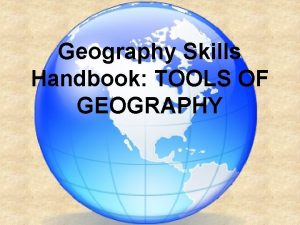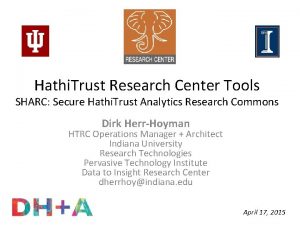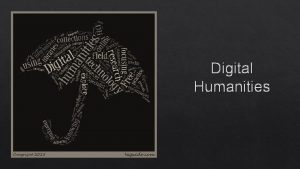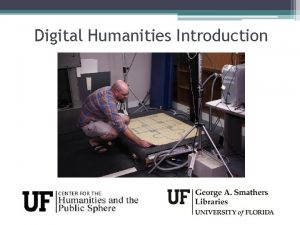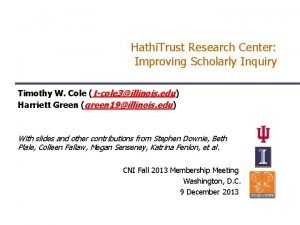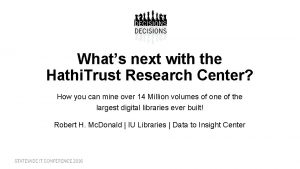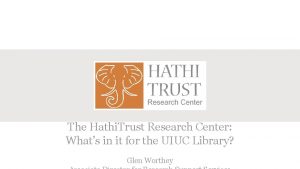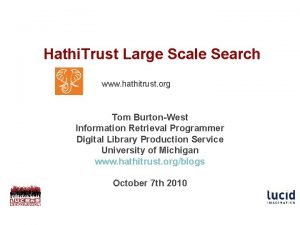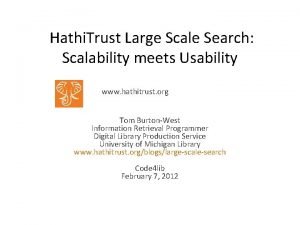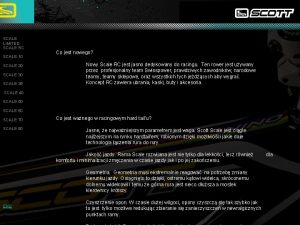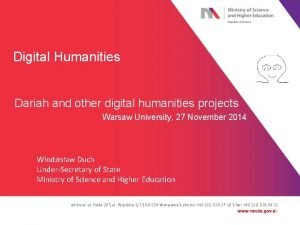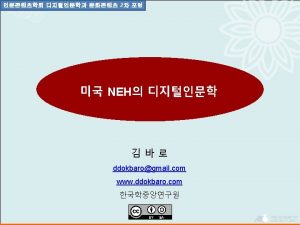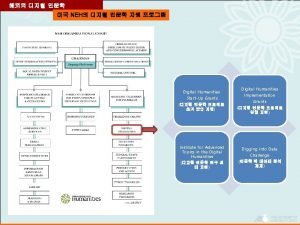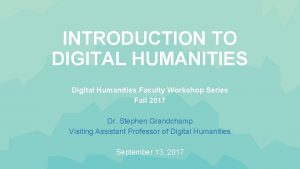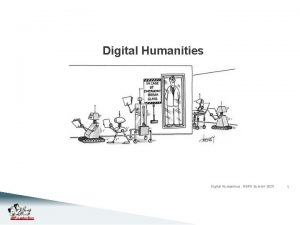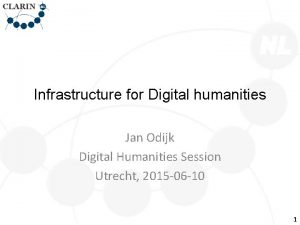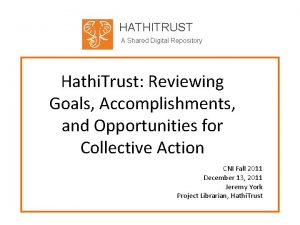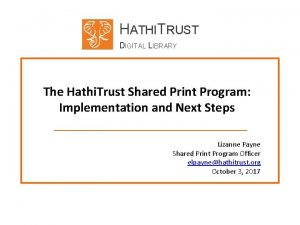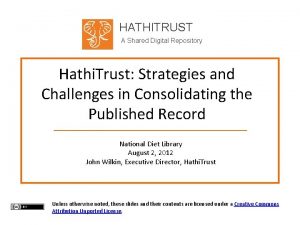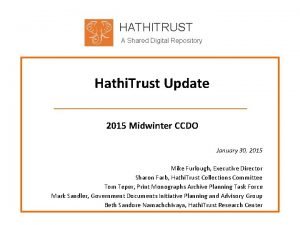Digital Humanities At Scale Hathi Trust Research Center

































- Slides: 33

Digital Humanities At Scale: Hathi Trust Research Center CNI Project Briefing, December 2012 John Unsworth, Brandeis University Beth Sandore Namachchivaya University of Illinois at Urbana-Champaign

HTRC Mission • Public research arm of the Hathi. Trust • Help researchers world-wide to accomplish tera-scale text data-mining and analysis – Develop cutting-edge software tools for processing, analyzing text – Develop cyberinfrastructure to enable HPC access to the Hathi. Trust Digital Library • Established: July, 2011 • Collaborative center: Indiana University & University of Illinois 10/22/2021 CNI Fall 2012 Membership Meeting #CNI 12 F #HTRC #Hathi. Trust

à Hathi. Trust is large corpus providing opportunity for new forms of computation investigation. à The bigger the data, the less able we are to move it to a researcher’s desktop machine à Future research on large collections will require computation moves to the data, not vice versa

HTRC Next Steps • Phase 2 availability of resource planned for 31 March 2013 • Thanks to: Photos from HTRC Un. Camp 9. 10. 12 at Indiana University

HTRC Non-Consumptive Research Paradigm • No action or set of actions on part of users, either acting alone or in cooperation with other users over duration of one or multiple sessions can result in sufficient information gathered from collection of copyrighted works to reassemble pages from collection. • Definition disallows collusion between users, or accumulation of material over time. Differentiates human researcher from proxy which is not a user. Users are human beings. 10/22/2021 CNI Fall 2012 Membership Meeting #CNI 12 F #HTRC #Hathi. Trust

Initial Requirements Gathering: 2010 -11 GOOGLE DIGITAL HUMANITIES AWARDS RECIPIENT INTERVIEWS REPORT PREPARED FOR THE HATHITRUST RESEARCH CENTER VIRGIL E. VARVEL JR. ANDREA THOMER CENTER FOR INFORMATICS RESEARCH IN SCIENCE AND SCHOLARSHIP UNIVERSITY OF ILLINOIS AT URBANA-CHAMPAIGN Fall 2011

The study • John Unsworth invited all 22 researchers with Google Digital Humanities Research Awards to participate in study • Interviews were conducted via telephone, Skype®, or face-to-face, and all were audio recorded. All participants agreed to IRB permission statement via email. • A semi-structured interview protocol was developed with input from HTRC to elicit responses from participants on primary goals of project.

Select findings • Optical Character Recognition – Improve OCR quality where possible – Enhance scanned image views for OCR reference and correction – Metadata should expose the quality of OCR • Need better, granular metadata about languages (human correction preferred) • Need Bibliographic records in useable form

Goals for HTRC • Provide a persistent and sustainable structure to enable original and cutting edge research. – Leverage data storage and computational infrastructure at Indiana & Illinois – Stimulate community development of new functionality and tools – Use tools to enable discoveries that would not be possible without the HTRC • Enable scholars to fully utilize content of Hathi. Trust Library while preventing intellectual property misuse within U. S. copyright law. – Provision secure computational and data environment for scholars to perform research using Hathi. Trust Digital Library.

New Questions Identify all 18 th century published books in Hathi. Trust corpus, and apply topic modeling to create consistent overall subject metadata • Ted Underwood et al. , University of Illinios

Exemplar HTRC Research: The task of cleaning and enriching large collections: what aspects can we share? UIUC English Dept. : Ted Underwood Jordan Sellers Mike Black UIUC Library: Harriett Green I 3: Loretta Auvil, Boris Capitanu Supported by: The Andrew W. Mellon Foundation

Yearly values of a ratio between two wordlists in three different genres. 4, 275 volumes. 1700 -1899. Underwood et al. Research

Underwood et al. Research

analyzing the data cleaning the data Underwood et al. Research

Cleaning the data 1. Clean up the OCR / assess error. 2. Identify parts of a volume (e. g. , articles in a serial, poetry/prose). 3. Remove library bookplates and running headers — after using them for (3). Underwood et al. Research

Cleaning/enriching the metadata 1. “ 18? ? ” 2. Discard duplicate volumes / select early editions? 3. Add metadata that you need for interpretive purposes, like — gender (see Ben Schmidt’s technique), — genre. Underwood et al. Research

Things we could share period lexicons / variant spellings gazetteers of proper nouns OCR correction rules for a period document segmentation and/or cleaned and segmented text ferberization cleaned / enriched metadata code to do all of the above Underwood et al. Research

active learning: documents classified as “fiction, ” plotted by confidence in classification (y axis). Red points are misclassified. Underwood et al. Research

Corpus Usage Patterns Chapter 1 Page IV Access by chapter Access by page Page IV Table of Contents Table of 1…………. #Contents 1…………. 2………… Table of # ## Contents 2…………# 1…………. # # 2…………# # 10/22/2021 Access by special contents (table of contents, index, glossary) 19

HTRC architecture • • Philosophy: computation moves to data Web services architecture and protocols Registry of services and algorithms Solr full text indexes no. SQL store as volume store open. ID authentication Portal front-end, programmatic access SEASR mining algos 10/22/2021 20

Web portal SEASR analytics service Agent framework Agent instance Access control (e. g. Grouper) services, collections, data capsule images Agent instance Solr index Task deployment Meandre Orchestration Non-consumptive Data capsules NCSA local resources Future Grid NSF XSEDE 10/22/2021 WSO 2 registry Programmatic access e. g. , Volume store (Cassandra) NCSA HPC resources Penguin on Demand Blacklight HTRC Data API v 0. 1 CI logon (NCSA) Desktop SEASR client rsync Hathi. Trust corpus Page/volume tree (file system) University of Michigan 21

Example access point: SEASR 10/22/2021 22

Algorithms • Computational analysis is accomplished through algorithms – An algorithm carries out one coherent analysis task: sort list of words, compute word frequency for text • Researcher’s computational analysis often requires running sequence of algorithms. Important distinction for implementing nonconsumptive research is “who owns the algorithm”?

Infrastructure for computational analysis • When needing to support computation over 10+M volume corpus, algorithms must be colocated with data. • That is, algorithms must be located where repository is located, and not on user’s desktop. • When computational analysis is to be nonconsumptive, likely one location for the data.

Who owns algorithm? • HTRC owns the algorithms, – use Software Environment for Advancement of Scholarly Research (SEASR) suite of algorithms – we are examining security requirements of users, algorithms, and data

User owns and submits their algorithms • HTRC recently received funding from Alfred P. Sloan foundation to prototype “data capsule framework” that provisions for nonconsumptive research. • Founded on principle of “trust but verify”. Informatics-savvy humanities scholar is given freedom to experiment with new algorithms on protected information, but technological mechanisms in place to prevent undesirable behavior (leakage. )

Non-consumptive, user-owned algorithms infrastructure; requirements: • Implements non-consumptive • Openness – users not limited to using known set of algorithms • Efficiency – Not possible to analyze algorithms for conformance prior to running • Low cost and scale – Run at large-scale and low cost to scholarly community of users • Long term value –adoption for other purposes

Categories of algorithms. Can fair use be determined based on categorization of algorithm? Or is all computational use fair use? 10/22/2021 28

Algo results fair use? • Center supplied – Easier because we know category of algorithm • User supplied – HTRC is not examining code, so open question

Parting philosophy • Finally, results of computational research that conforms to restrictions of non-consumptive research must belong to researcher

How to Engage • Building partnership with researchers and research communities is key goal of the Hathi. Trust Research Center • HTRC can give technical advice to researchers as they look for funding opportunities involving access to research data • Upcoming “Fix the OCR and Metadata Shortage Community Challenge” : help us address couple key weaknesses of HT corpus

Contact Information • John Unsworth, Brandeis University – unsworth@brandeis. edu • Beth Sandore Namachchivaya, University of Illinois – sandore@illinois. edu 10/22/2021 CNI Fall 2012 Membership Meeting #CNI 12 F #HTRC #Hathi. Trust

Thank You • This presentation was made possible with content provided by many HTRC colleagues Beth Plale, Marshall Scott Poole, John Unsworth, J. Stephen Downie, Stacy Kowalczyk, Yiming Sun, Guangchen Ruan, Loretta Auvil, Kirk Hess, and many others… • The HTRC Non-Consumptive Research Grant is graciously funded by the Alfred P. Sloan Foundation • IU D 2 I-PTI is graciously funded by The Lilly Endowment, Inc. • HTRC - http: //www. hathitrust. org/htrc • IU D 2 I Center - http: //d 2 i. indiana. edu/ • UIUC GSLIS - http: //www. lis. illinois. edu/ 10/22/2021 CNI Fall 2012 Membership Meeting #CNI 12 F #HTRC #Hathi. Trust
 Hathi digital trust
Hathi digital trust The jungle book 1967
The jungle book 1967 Digital humanities
Digital humanities Charitable work
Charitable work College of humanities and social sciences
College of humanities and social sciences What is the historical development of humanities
What is the historical development of humanities Discovering the humanities 3rd edition
Discovering the humanities 3rd edition What is medical humanities
What is medical humanities Where was the early renaissance (ca. 1400-1490) centered?
Where was the early renaissance (ca. 1400-1490) centered? Landmarks in humanities
Landmarks in humanities Landmarks in humanities 5th edition chapter 1
Landmarks in humanities 5th edition chapter 1 Humanities through the arts
Humanities through the arts What is humanities in art appreciation
What is humanities in art appreciation Ldap cuni
Ldap cuni Columbus humanities arts and technology academy
Columbus humanities arts and technology academy Art and humanities endorsement
Art and humanities endorsement Scope of humanities in art appreciation
Scope of humanities in art appreciation B'faculty of humanities agh', b'poland'
B'faculty of humanities agh', b'poland' Human flourishing definition
Human flourishing definition Humanities subjects
Humanities subjects Essay about humanities
Essay about humanities Ca humanities
Ca humanities Humanities and social sciences
Humanities and social sciences Humanities art appreciation ppt
Humanities art appreciation ppt Introduction to humanities ppt
Introduction to humanities ppt Functions of art
Functions of art Arts and humanities endorsement
Arts and humanities endorsement Small vs large scale maps
Small vs large scale maps Types of scale drawing
Types of scale drawing A pentatonic or a five tone scale
A pentatonic or a five tone scale Bar scale
Bar scale Scale of a map
Scale of a map Introduction to topographic maps
Introduction to topographic maps Large scale vs small scale map
Large scale vs small scale map
